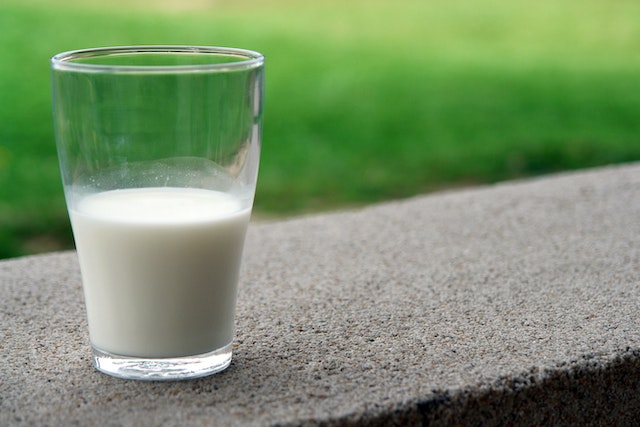
Why does drinking milk help after eating spicy food? Milk helps after eating spicy food such as chili because it contains something called casein.
When you eat spicy food, the oily capsaicin molecules attach themselves to nerve receptors in your mouth. These receptors then release a protein called TRPV1, which alerts your brain to heat. Your brain thinks you are being burned, so it sends an electrical pain signal back to your mouth, trying to get you to spit out whatever is burning you. Chilis don’t cause actual burns, they just trick us into thinking we are being burned. The chili plants have evolved this trick as a defense against animals. Most animals that are smarter than humans would spit the chili back out again. The capsaicin is a long-lasting molecule, which makes the pain last.
Drinking water or drinks that are mostly water will not get rid of capsaicin. Capsaicin is a hydrophobic substance, which means it repels water. Water molecules have a positive and a negative charge. Hydrophobic molecules have a balance of electrons, so they are neither positive or negative. That means they don’t interact with water molecules. Oil is another example of a hydrophobic substance, which is why oil and water don’t mix. When you drink water after spicy food, the water molecules simply move around and past the capsaicin molecules.
So why does drinking milk help after eating spicy food? Milk contains a protein called casein. 80% of the protein in cow’s milk is casein. The casein proteins in milk break the bonds that the capsaicin molecules make with the pain receptors in your mouth and wash them away. Capsaicin has a long hydrocarbon tail that is hydrophobic, but this is what the casein can latch on to. The casein molecules surround the capsaicin and wash them away. It is the same as when you try to wash a greasy dish using only water. You cannot get the grease out, but if you use detergent you can clean it. Casein acts the same way as detergent on the capsaicin molecules. Any dairy product will have a similar effect, but it has to be milk from a mammal. Soy milk, coconut milk, and other plant based milks don’t contain casein and won’t help.
Acidic things, such as orange juice or lemon juice, also help because capsaicin is alkaline and an acidic drink can neutralize it. Useful information to know.
And how do we know how spicy something is? We can use the Scoville Heat Unit, which is named after Wilbur Scoville. Wilbur Scoville was born in 1865 and was an American pharmacist. He was trying to measure the pungency and the spiciness of chili peppers. He came up with the Scoville scale, or the Scoville Heat Unit (SHU), which has become the most commonly used method for grading the spiciness of a chili pepper. However, it is not the most accurate method because it is subjective.
SHU is worked out by dissolving a specific weight of dried pepper in alcohol, which extracts the capsaicinoids (the spicy bit). Then it is diluted in a solution of sugar water before 5 trained tasters taste it. They keep tasting more and more diluted solutions until they can no longer feel any spiciness. So, for example, the Carolina Reaper has a SHU of 1,641,183. That means it needs to be diluted 1,641,183 times before the tasters cannot feel any heat from the pepper oil. And this is why the SHU is not the best method of testing the spiciness of a chili. The tasters are trained, but spiciness is always going to be subjective.
There is a much more accurate test called high-performance liquid chromatography. In this test, the chili pepper is dried and ground, then combined with a solution. The solution is pressurized and forced by a pump through a column filled with a solid absorbent material. This separates the components of the liquid and each component has a different flow rate. A detector analyzes the components and it can accurately tell which capsaicinoids are present and how many there are. It is a far more accurate test, but the results are measured in Scoville Heat Units, in honor of Wilbur Scoville. This method has been used since about 1980.
Sources
https://www.usdairy.com/news-articles/does-milk-help-with-spicy-food
https://health.clevelandclinic.org/does-milk-help-with-spicy-food
https://www.naturespath.com/en-us/blog/all-about-the-scoville-scale/
https://en.wikipedia.org/wiki/Scoville_scale
https://en.wikipedia.org/wiki/Wilbur_Scoville
https://en.wikipedia.org/wiki/High-performance_liquid_chromatography
